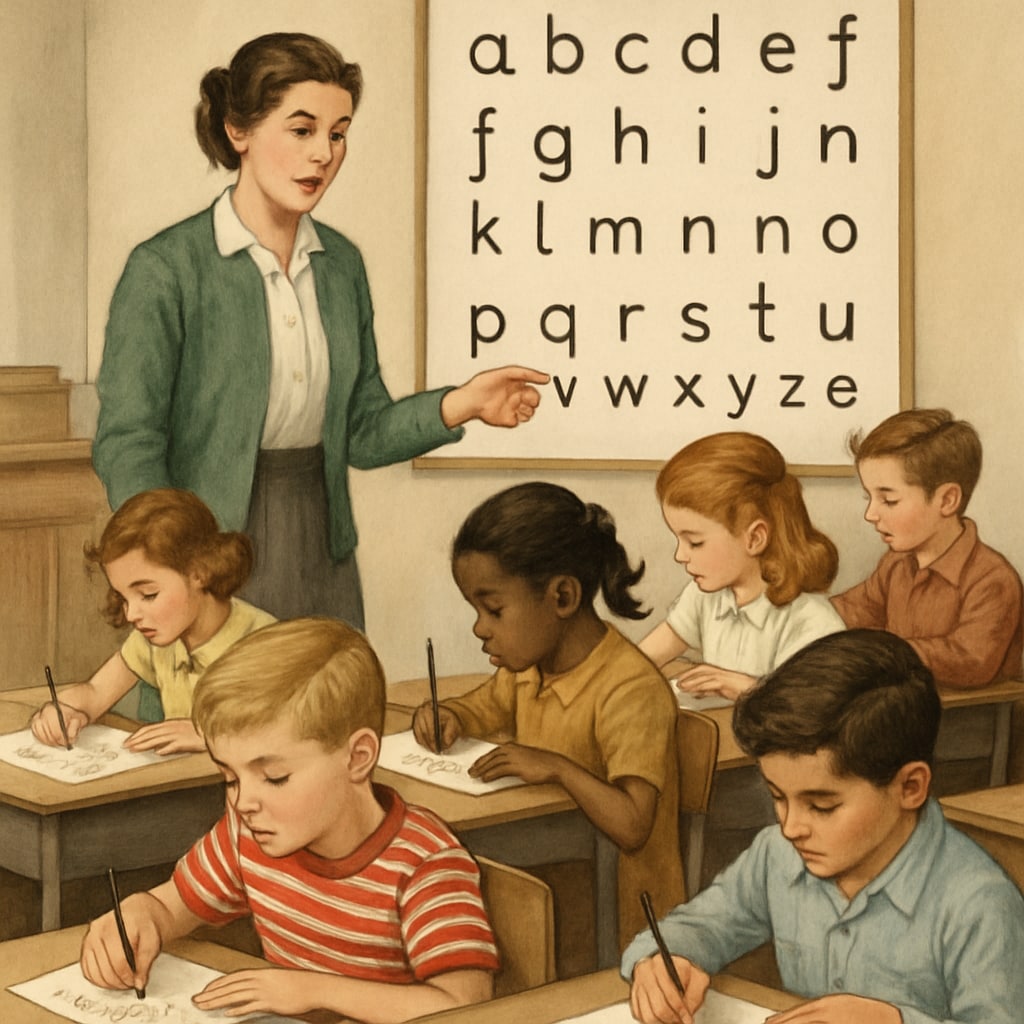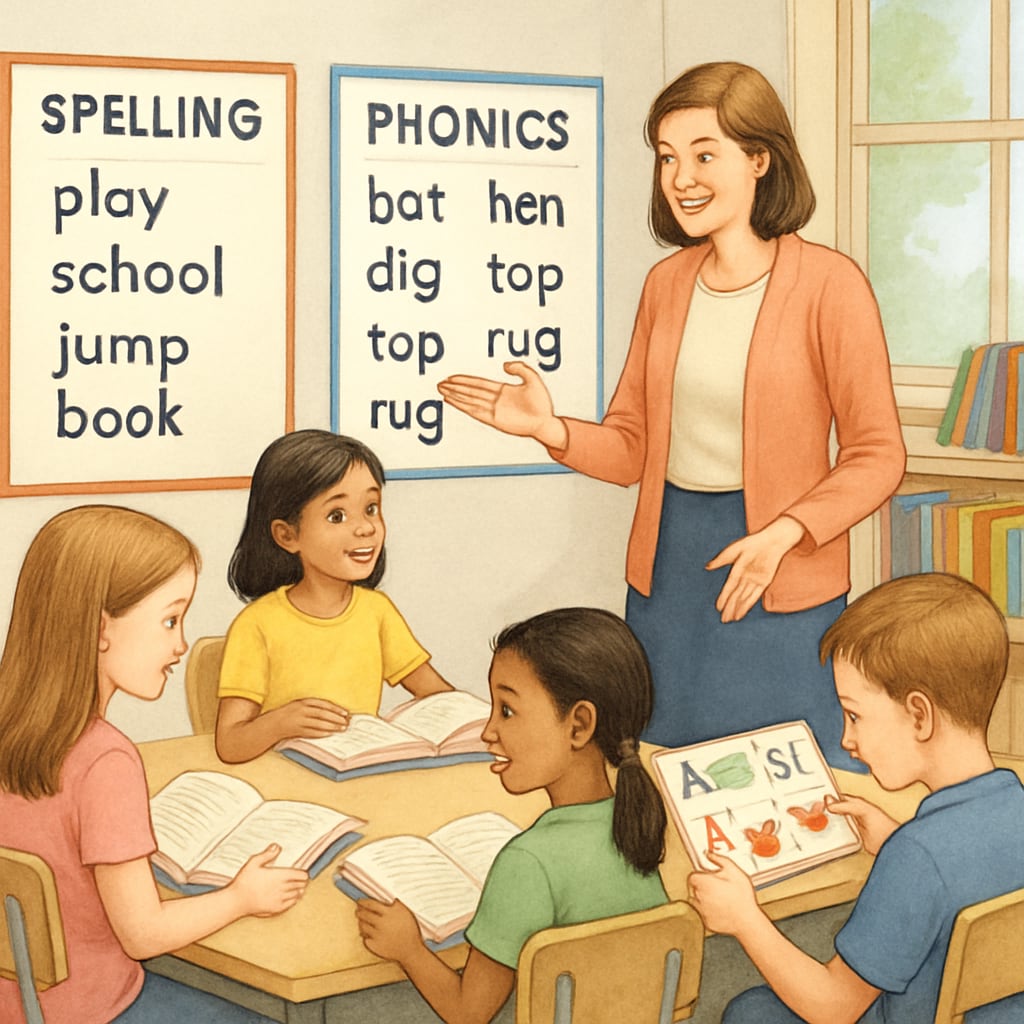The ITA (Initial Teaching Alphabet), a groundbreaking educational initiative from the 1970s, promised to revolutionize how children learned to read and write. While it succeeded in accelerating early literacy, the method unintentionally contributed to lifelong spelling difficulties for many students. This article examines the origins of ITA, its goals, and the long-term consequences of its implementation.
What Was the ITA Teaching Method?
The ITA was developed in the 1950s by British educationalist Sir James Pitman. It consisted of a simplified alphabet of 44 phonetic characters representing the sounds of spoken English. The goal was to make reading and writing easier for beginning learners by eliminating the complexities of English spelling. For example, the word “through” was spelled as “thru” in ITA, aligning with its phonetic pronunciation.
ITA gained considerable traction in the 1960s and 1970s, particularly in the UK and the US. Proponents argued that by removing traditional spelling complexities, children could grasp reading and writing more quickly. Schools and educators were eager to test this innovative method, and many adopted it enthusiastically.

Why Did ITA Fall Out of Favor?
Despite its initial success in helping children learn to read faster, ITA had significant drawbacks. The transition from ITA to standard English spelling proved to be a major hurdle for students. Children who had become accustomed to the simplified phonetic system often struggled to adapt to the irregularities of traditional English spelling. For example, having learned “thru” in ITA, they found it challenging to recognize or spell “through” in standard English.
As a result, many educators and parents began to notice long-term spelling issues in students who had been taught using ITA. Critics also pointed out that the method failed to prepare students for real-world literacy, as it created a dependency on phonetics rather than teaching the intricacies of actual spelling rules.
The Long-Term Impact on Spelling Skills
The most concerning consequence of ITA was its lasting impact on spelling proficiency. Many individuals who were taught using ITA in their early years reported persistent difficulties with spelling well into adulthood. This phenomenon has been attributed to the brain’s early reliance on phonetic patterns, which created a “mental disconnect” when transitioning to standard English spelling.
In addition, the inconsistency between ITA and traditional English made it harder for students to internalize spelling rules. This was particularly evident in words with irregular spellings or silent letters, which ITA had intentionally simplified. For example, words like “knight” and “psychology” posed significant challenges for former ITA users.
Lessons Learned: The Importance of Balanced Literacy Approaches
The ITA experiment serves as a cautionary tale about the risks of prioritizing short-term gains over long-term outcomes in education. While the method demonstrated the value of phonics in early literacy, it also highlighted the importance of integrating standard spelling rules from the beginning. Modern literacy programs have since adopted more balanced approaches, combining phonics with traditional spelling instruction to avoid similar pitfalls.
Today, education experts emphasize the need for comprehensive literacy strategies that address the complexities of the English language. While phonetic methods can be helpful tools, they must be carefully designed to support, rather than hinder, a student’s ability to master standard spelling and writing conventions.

Conclusion: The ITA teaching method of the 1970s was a bold attempt to simplify literacy education. Although it offered some initial benefits, its long-term impact on spelling proficiency revealed critical flaws. By examining the lessons of ITA, educators can develop more effective teaching methods that balance early literacy gains with lifelong skills. As a result, the legacy of ITA underscores the importance of thoughtful, evidence-based educational practices.
Learn more about the Initial Teaching Alphabet on Wikipedia | Explore ITA’s history on Britannica
Readability guidance: This article uses short paragraphs, clear transitions, and accessible language to ensure readability. Care has been taken to limit long sentences and passive voice, while incorporating key points in a structured manner.


